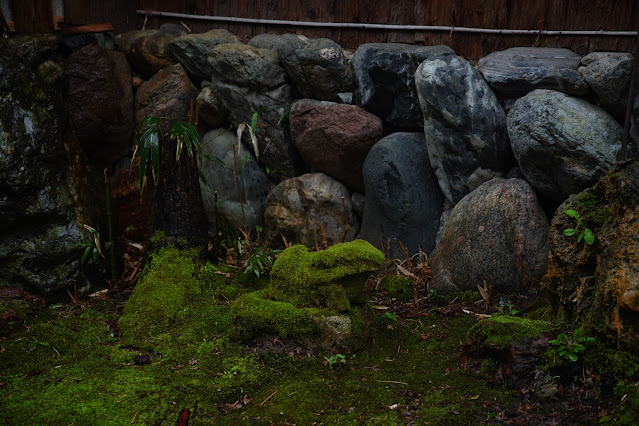親子蛙
当家の親子蛙は、愛知県岡崎産の「三州」と呼ばれる錆系の軟質花崗岩を用いて彫刻されたものであり、その風合いや加工の痕跡から、大正から昭和初期にかけて手彫りで製作されたものと考えられる。錆色のあたたかみある石肌は、家庭の庭先や神社の片隅などに自然と調和し、時代を越えて心を和ませる佇まいを見せる。親蛙の背中に子蛙がちょこんと乗る「親子蛙」の形をしており、「子は親の背中を見て育つ」という教訓をも内包している。二匹であるがゆえに、見る者に想像の余白を与え、「三蛙=栄える」「六蛙=迎える」といったさらなる縁起を思い描かせる。時を経て、そこにもう一匹、あるいは四匹の仲間が加わる日が来るかもしれない。そうした未来への願いすら込められているようでもある。この親子蛙の置物は、出産祝いや家族の門出、引越し、転勤、卒業といった人生の節目においても、心を込めた贈り物として用いられてきた。それは単なる石の彫刻ではなく、「無事に帰る」「未来へ栄える」という、誰しもが持つ願いを静かに受け止める、優しく力強い守り神のような存在なのである。
The parent-and-child frog ornament has long been cherished in Japan as a symbol of good fortune.
It represents a wide range of wishes in life, including prosperity for descendants, family safety, traffic safety, financial luck, business success, good fortune, and longevity.
In Japanese culture, frogs are considered symbols of career advancement, as they only leap forward. Because they lay many eggs, they are also associated with fertility and abundance.
Additionally, the word for frog in Japanese, kaeru (蛙), is a homophone for returning (帰る), giving rise to symbolic meanings such as “returning home safely,” “regaining youth,” and “welcoming fortune. ”This linguistic connection has made frogs deeply rooted in daily life as auspicious creatures.
Their habit of croaking before rain has also contributed to their image as bringers of natural blessings, reinforcing their role as spiritual and lucky figures in Japanese tradition.This sculpture is carved from a soft, rust-colored granite known as Sanshū, sourced from Okazaki in Aichi Prefecture.
Judging from its texture and the marks left by hand tools, it is believed to have been hand-carved sometime between the Taishō and early Shōwa periods.
The warm, rust-toned surface blends naturally into various settings — whether in a private garden or nestled in the corner of a shrine — offering a quiet, timeless presence that brings a sense of peace to the viewer.
Shaped as a parent-and-child frog, with a small frog perched gently on the back of a larger one, the piece reflects the wisdom in the old Japanese saying:
“Children grow up watching their parents’ backs.”
Although there are only two frogs, the composition leaves room for the imagination — evoking auspicious associations such as:
“Three frogs = prosperity” or “Six frogs = welcome fortune.”
One can even imagine more frogs joining them in the future — perhaps a third or even a fourth — embodying a quiet hope for what lies ahead.
This oyako-gaeru (parent-child frog) sculpture has often been chosen as a heartfelt gift for important life milestones such as childbirth, family beginnings, moving to a new home, job transfers, or graduation.
It is more than just a stone carving.
It stands as a gentle yet powerful guardian, silently holding the heartfelt wishes of those who pass by —
for a safe return, for prosperity, and for a bright future.




コメント
コメントを投稿